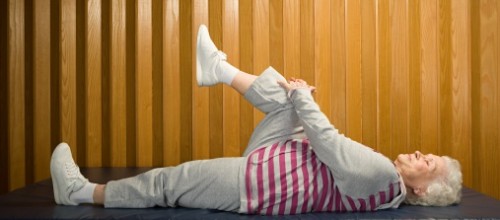
Fall Prevention in the Elderly
Scientists have found that there’s an unconscious, complex coordination that happens between our foot placement, arm movement, trunk angle, and neck and head motion in every step we take in order for us to stay balanced. The reason for this is that every, single step we take is different from the one we took just before, so there are different factors that affect each one. The length and width of your stride, the angle at which your foot meets the ground, and even slight shifts of weight in your torso can vary with every step you take. Your body is unconsciously accommodating all of these variations by making automatic adjustments as you move.
Additionally, some researchers have been exploring the brain’s control of our balance, which has previously been fairly mysterious. Recently, studies have found that there are a group of motion-detecting neurons deep within the brain that alert the body when it moves unexpectedly, such as when you stumble over something on the ground. The alert that these neurons sends out triggers your body to react to compensate for the unexpected motion, in an attempt to keep you from falling.
The research being done on balance and stability can hopefully be used to improve the way that athletes train. This would be especially beneficial to athletes who rely strongly on their balance, such as skiers and gymnasts. Researchers are also hopeful that the information they learn through their studies will be able to help doctors predict their patients’ risks of falling in the future. Being able to predict future falls would help them to better strategize to prevent falls from happening in the first place, and to implement more effective rehabilitation efforts. In people age 65 and older, falls are the number one cause of death and injury. The Centers for Disease Control and Prevention also reported that in 2010, over two million older people went to the emergency room as a result of falling.
There are three main systems without our bodies to keep us balanced. If there is something wrong with two or more of these symptoms, a person will generally have problems balancing.
- Visual System: Information about the things we see in the world around us is transmitted to the brain.
- Proprioceptive System: Tells us how the body’s parts are oriented relative to each other by using sensory systems throughout our bodies.
- Vestibular System: Mainly focuses on how the head is moving, and is located in the inner ear.
The vestibular system tends to lose its sensitivity as people age. To compensate for the decreased reliance on the vestibular system, people usually rely more on their vision, which is a much slower system than the vestibular. This is often why older people fall, because their bodies don’t process information quickly enough to correct missteps before they hit the ground.
One of the studies being done on peoples’ balance is a study at VU University Amsterdam, which is mapping the tiny, natural variations from one step to the next that people make. If a subject displays a greater than normal variability, there’s a good change their risk of falling his also greater.
Another study found that older people were more likely to exhibit variations from step to step than younger people. This was found when the researchers tracked healthy people as they walked and ran. They determined that younger people were better able to quickly adjust their movements.
The primary function used to maintain side-to-side balance is foot placement. Researchers have been looking into other movements that the body makes to supplement balance when foot placement is restricted, such as when a person is trying to walk in a straight line. At these times, a person might wave his arms or angle his torso differently in an attempt to stabilize his body.
There has also been extensive research into how balance is controlled by the brain. Some studies have been done where electrodes have been implanted in monkeys’ brains to monitor the neurological response to unexpected motion, and the alerts sent to make the body react. If a person starts to trip, for example, the torso may become more rigid to keep the body upright, and the neck may flex to keep the head stable, and the legs and feet take a “stutter step.”
The most common explanation for a fall in elderly people is that they tripped or slipped. In order to test this claim, researchers in British Columbia installed video cameras in a facility that cared for the elderly to monitor falls. After recording 227 falls from 130 people in three years, they found that only 1 in every 5 falls was due to tripping. Most often, falls occurred because a person would shift weight incorrectly, such as leaning too far forward.
Through all of these different studies, one conclusion is that a doctor’s determination of a patient’s balance and stability should be more thorough than simply watching how the patient walks around in the office. Shifting weight, such as when a person sits or stands, is much more often the cause of a fall in the elderly.
